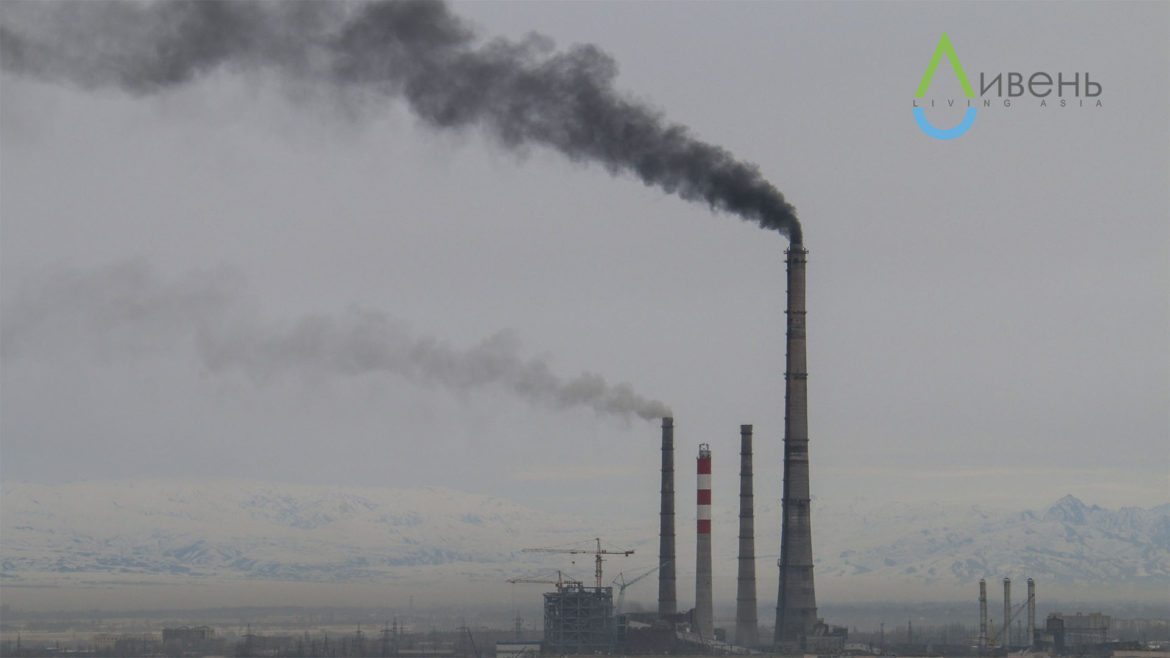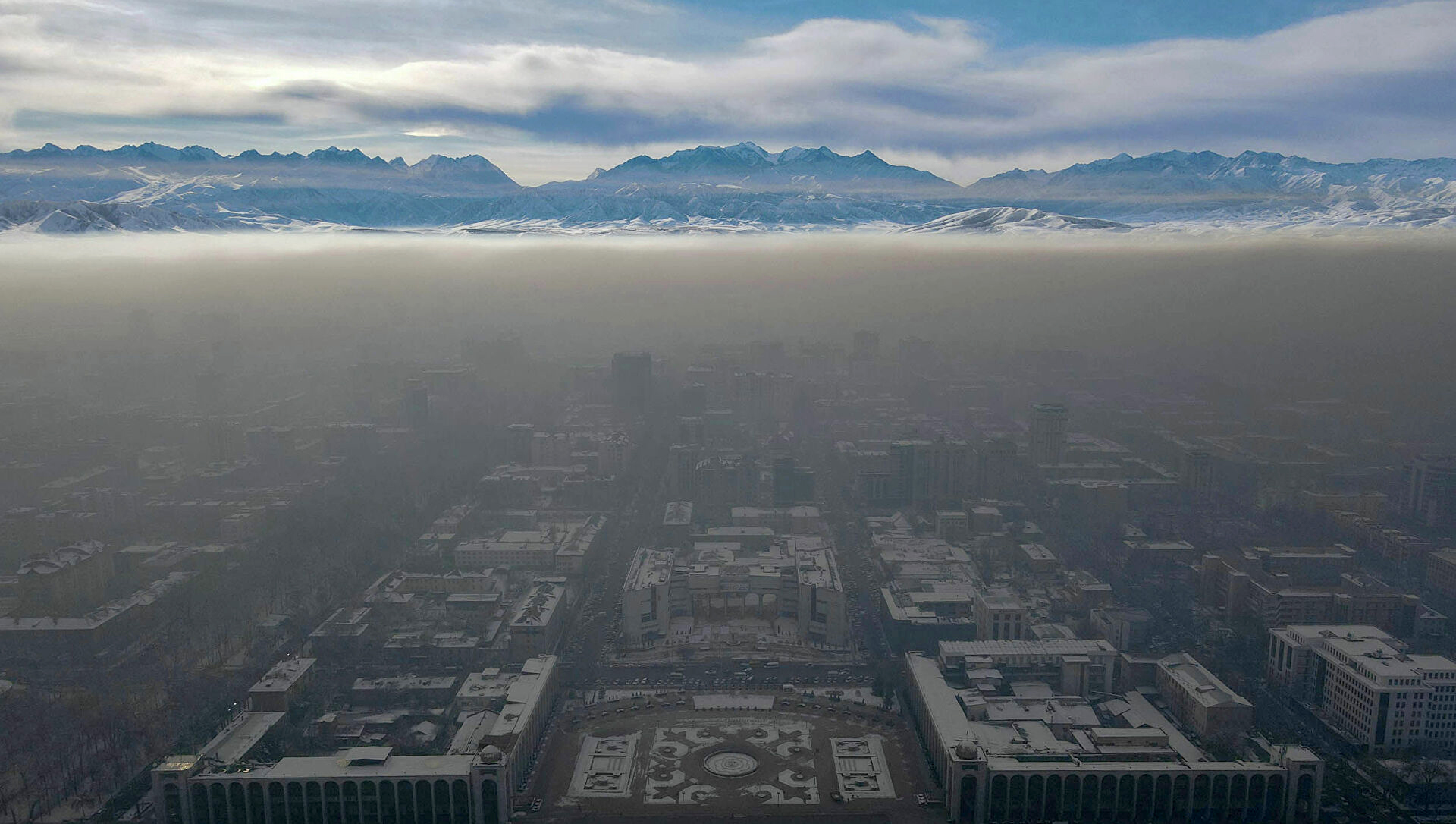- hot-spots
- air
- Kyrgyzstan
- Air pollution in Bishkek Kyrgyzstan
Problems
Causes of air pollution in Bishkek
Bishkek has entered the top 10 dirtiest cities, ranking first in the Air Quality Index, surpassing Tehran and Mumbai. According to the AirVisual service, the air pollution index has recently ranged from 402 to 410. Environmentalists have given the capital a "Dangerous" status. The average PM 2.5 particle content in Bishkek, according to the website, is 364.9 µg/m3. The analysis identified three main sources of atmospheric air pollution in Bishkek: 1. Exhaust gases of motor vehicles; 2. Pollution from combustion for heating; 3. Pollution from dust and other particulate matter. According to the State Agency for Environmental Protection and Forestry under the Government of the Kyrgyz Republic (SAEPF), the annual total volume of air pollutant emissions in Bishkek is 240 thousand tons, of which 180 thousand tons are emissions from motor vehicles. Other sources are the public and private sector, which produces emissions from combustion for heat and energy, as well as businesses in the city. However, it should be noted that these figures are most likely underestimated due to the limited scope and methodology of pollution measurement. Analysis of the system's dynamics showed that the main drivers of the increase in emissions are the number and quality of cars and combustion for heat. In turn, the number of cars increases due to the underdeveloped public transportation system, as well as the prestige of car ownership and the concentration of economic activity in the center of cities. Individual vehicle parameters such as engine displacement and type, fuel type, engine oil type, driving distance, and age have a direct impact on the number of emissions. However, the government does not keep records of vehicles by level and volume of emissions, even though all manufacturers provide this information and the data is freely available.
Automobile emissions
The number of cars in Bishkek has been growing rapidly in recent years. Thus, according to the GRS, the average annual increase in the number of cars in the capital was 13% and in 2018 the average number of cars per thousand inhabitants reached 450 cars, which is almost one-third more than in London or almost twice as many as in Amsterdam. Compared to other cities, this figure is much higher than the average ratios. This figure demonstrates the weakness of the city's policy for the development of public transport.
Heating with coal
Another major source of air pollution in the cities of the country is combustion for heat or energy. In Kyrgyzstan, for example, the production and consumption of coal, which is one of the fuels with one of the highest levels of pollutant emissions, is growing rapidly. Most of the coal mined in Bishkek is consumed in the private sector with a large annual increase in coal consumption. Residential areas surrounding Bishkek mainly use coal for heating, and in winter the CHP increases the amount of coal combustion for heat and electricity generation.
Pollution by dust and other particulate matter
Measurements of concentrations of particulate matter show very high levels of particulate pollution. The city has a disastrous situation with the city's green infrastructure, with parks and other green spaces being destroyed to build roads, parking lots, and buildings. At the same time, city officials pay little attention to the care and development of existing parks. Of course, this section is directly related to the deterioration of motor vehicles and heating. The main reasons are: ● Reduction in the proportion of green space; ● Destruction of green strips along roads; ● Spraying of sand in the fight against ice; ● Lack of asphalt pavement on roads in residential areas; ● Soil from construction sites; ● Particle buildup on tires of large vehicles from quarries; ● Burning of garbage and other waste in private residential areas.
Gallery
3Timelines
2022
February 09
The United Nations Environment Programme (UNEP) has called for partners to work together and support the Kyrgyz Republic’s transition away from coal, as the country’s capital today ranks as number two in the world for air pollution despite a mild winter. Despite only having one million inhabitants, heavy dependence on coal means that the Kyrgyz capital experiences severe and hazardous air pollution comparable to, and sometimes worse than, megacities such as New Delhi.
2021
March 07
Residents of Bishkek have been in an area of dangerous air pollution for 32 days, according to the Bishkek Air Quality Monitor at the U.S. Embassy in Kyrgyzstan. The public opinion survey shows that citizens' awareness of the negative effects of air pollution is increasing in all urban centers in Kyrgyzstan.
2020
June 25
Kyrgyzstan's parliament passed the Clean Air Bill, and it was signed by the president. According to the bill, companies that produce electric cars and vehicle parts in Kyrgyzstan have preferential conditions, including relief from value-added tax and customs duties. The legislation seeks to incentivize electric car manufacturing through the exemption of certain customs and taxes. The effect of the statute also extends to companies that import electric cars to Kyrgyzstan.
2018
November 24
Poor urban planning has exacerbated the smog from coal stoves and car exhaust. Over the past few years, large numbers of high-rise buildings have gone up with little supervision, resulting in the refreshing air that used to descend from mountains in the south cannot circulate freely. The State Agency for Environmental Protection and Forests estimates that of the 240,000 tons of harmful emissions pumped into Bishkek's air each year, around 180,000 tons come from cars.

